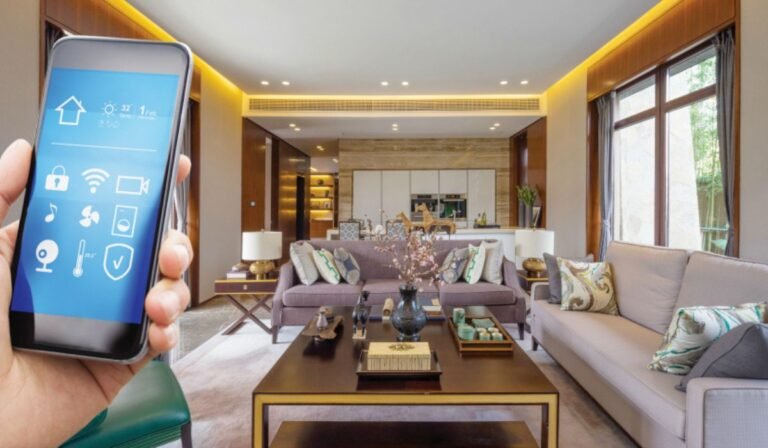The Rise of Smart Homes in Modern Living
The age of smart home technology has arrived, revolutionizing how we interact with our living spaces. What was once confined to the realm of science fiction is now woven into the fabric of modern life. From automated lighting and energy management to voice-controlled assistants, the capabilities of smart homes are expanding at an impressive rate.
Homeowners are increasingly drawn to the advantages—especially when comparing advanced options like Redwood City homes for sale that already integrate these technologies, boosting both value and appeal to modern buyers.
The move toward smarter homes stems from a desire for greater daily convenience, optimized energy use, and a stronger sense of security. This evolution is not only changing how people live but also setting new standards in the real estate market. More families and individuals are researching how these technologies can suit their routines, lifestyles, and sustainability goals.
Smart home technology is increasingly common, with millions of American households using devices like thermostats and cameras. For homebuyers, these features add value by creating adaptive, future-ready homes that enhance comfort, efficiency, and peace of mind.
Smart devices automate daily tasks, offer customizable comfort, improve energy efficiency, and allow remote control, making life more convenient while reducing stress and boosting overall quality of life.
Saving Energy and Lowering Bills
Energy efficiency lies at the heart of most smart home innovations. Smart thermostats learn your heating and cooling patterns, making real-time adjustments to maximize comfort and minimize waste. Similarly, smart plugs and lighting systems help reduce unnecessary power consumption by scheduling usage or automatically turning off when rooms are unoccupied.
Data from the U.S. Department of Energy highlights that these measures can decrease annual energy bills by 10-15%. Many homeowners see a quick return on their investments—especially as energy prices fluctuate and environmental concerns become more pressing.
Layering together smart shades, occupancy sensors, and appliances can compound these savings even further, supporting both your wallet and the planet by reducing your household’s carbon footprint.
Security That Goes Beyond Locks
Home security is more advanced than ever. Modern smart security systems now include features such as motion detection, video doorbells, geofencing, and integrated 24/7 monitoring services. These allow residents to check in on their homes from anywhere, receive instant alerts, and even interact with delivery personnel or guests remotely.
Enhanced safety not only provides peace of mind but often translates into tangible property value. Homes with robust smart security systems are consistently ranked higher by prospective buyers and renters, making them a sound investment for the future.
Addressing Privacy Concerns
As with any connected technology, privacy should remain a top priority. Protect your data by securing your Wi-Fi with a strong password and enabling features like two-factor authentication on all your smart device accounts.
Take the time to review the privacy policies for each device and app, noting options to limit sharing or disable tracking features that you don’t actively use. For greater control, consider using guest networks or setting permissions individually for each device.
What’s Next for Smart Home Technology?
The future promises even greater innovation as devices become increasingly intelligent and interconnected. Artificial intelligence is expected to supercharge smart homes—allowing your home to anticipate daily needs, suggest ways to save more energy, or even integrate with broader community and citywide infrastructure.
These advances are being fast-tracked in new residential developments and urban planning, creating smart communities designed for optimal convenience, sustainability, and security.
Quick Tips for Getting Started
- Pick a reputable smart home starter kit for stress-free setup and support.
- Opt for devices that boast broad compatibility to future-proof your investment.
- Research local rebates or incentives for energy-efficient upgrades to save money upfront.
- Start simple; you can always add complexity as you grow more comfortable with routines and automations.
Conclusion
Smart home technology is no longer a futuristic concept; it’s becoming an essential part of modern living. From energy-saving devices and advanced security systems to seamless automation and AI-driven innovations, these tools make daily life more convenient, efficient, and secure.
They not only enhance comfort and reduce costs but also increase a home’s appeal and long-term value. As technology continues to evolve, integrating smart solutions thoughtfully and prioritizing privacy will ensure homeowners get the most out of their investment.
Whether starting small or building a fully connected ecosystem, embracing smart home upgrades today lays the foundation for a more convenient, sustainable, and future-ready home.
Frequently Asked Questions
Q: Are smart home upgrades expensive?
A: Many entry-level devices are now very affordable and offer significant long-term savings due to efficiency and automation.
Q: Will smart home tech work in an older house?
A: Most modern smart systems are designed for easy integration regardless of the age or construction style of your home.
Q: What if one platform fails?
A: By choosing devices that offer backup controls or support integration with multiple platforms, homeowners can ensure minimal disruption.
